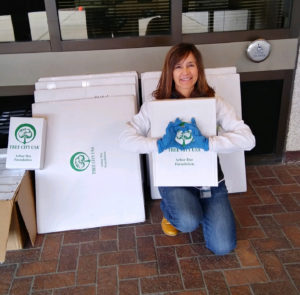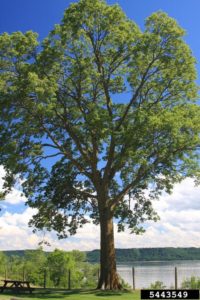The Division of Forestry offers the following update regarding our operations in response to the ongoing pandemic.
Most employees have been working remotely since mid-March to prevent the spread of COVID-19 to employees, their families and our external partners during this global pandemic.
While the goal is to gradually increase in-person activities that support our mission and Wisconsin’s economy, safety remains a top concern. Therefore, state office buildings, including DNR facilities, remain closed to the public. Although a limited number of gatherings may be approved, virtual meetings continue to be the preferred method for DNR staff and travel remains limited to essential and high-priority work. The majority of DNR staff continue to work remotely, although forestry fieldwork has fully resumed.
If you are planning to meet with a DNR forestry employee in person, such as a site visit for a forest management plan, they will be maintaining a distance of at least six feet, traveling to sites individually to maintain the required social distancing, wearing a mask and following diligent cleaning and disinfecting guidelines.
Thank you for your patience as we continue to safeguard the health of our customers, partners and employees.

 Recognizing that trees and vegetation are among the features that make communities special places for residents and visitors, American Transmission Co. will continue funding for planting projects in communities in its service area through its Community Planting and Pollinator Habitat programs.
Recognizing that trees and vegetation are among the features that make communities special places for residents and visitors, American Transmission Co. will continue funding for planting projects in communities in its service area through its Community Planting and Pollinator Habitat programs. We deeply appreciate the commitment to urban forestry demonstrated by our 2019 Tree City, Tree Campus, and Tree Line USA participants. Thank you for your hard work!
We deeply appreciate the commitment to urban forestry demonstrated by our 2019 Tree City, Tree Campus, and Tree Line USA participants. Thank you for your hard work! Thanks to the efforts of researchers over the past few decades, we have a solid understanding of the ecological benefits of urban forests, such as reduced greenhouse gases, decreased stormwater runoff, and lessening of the urban heat island effect. In contrast, knowledge of the human health benefits of urban forests is still developing. Existing reviews of health benefits have focused more broadly on nature, green space, and greenness rather than concentrating specifically on urban trees.
Thanks to the efforts of researchers over the past few decades, we have a solid understanding of the ecological benefits of urban forests, such as reduced greenhouse gases, decreased stormwater runoff, and lessening of the urban heat island effect. In contrast, knowledge of the human health benefits of urban forests is still developing. Existing reviews of health benefits have focused more broadly on nature, green space, and greenness rather than concentrating specifically on urban trees.

